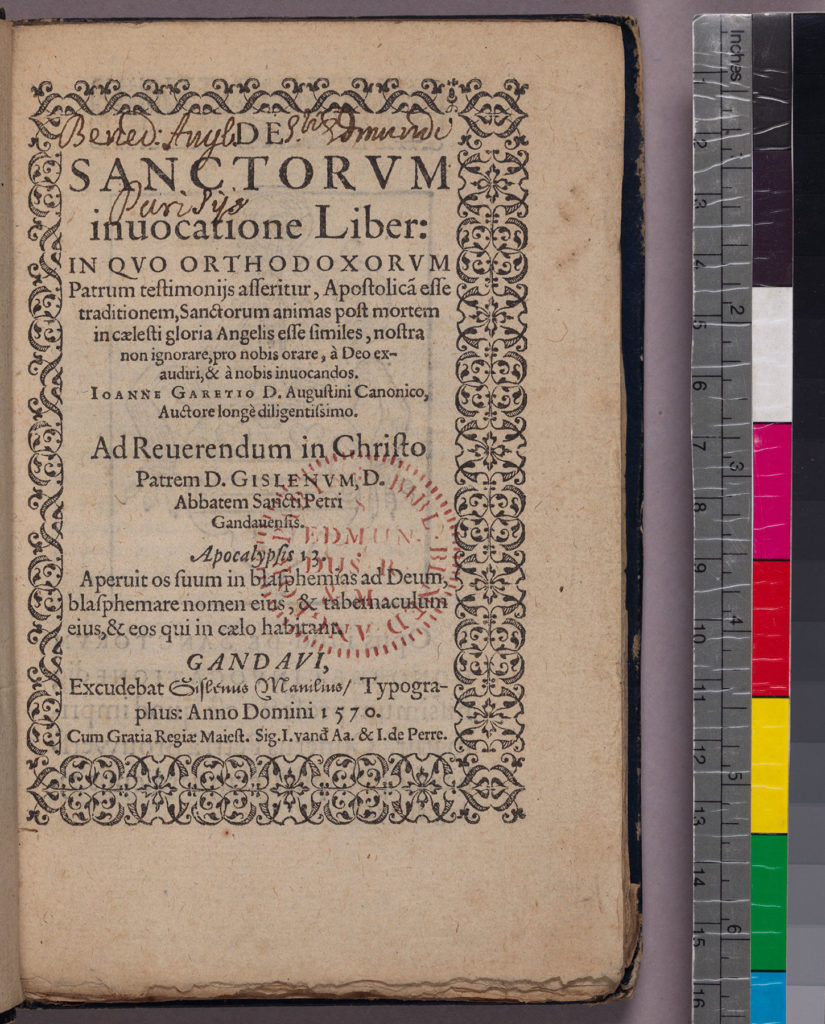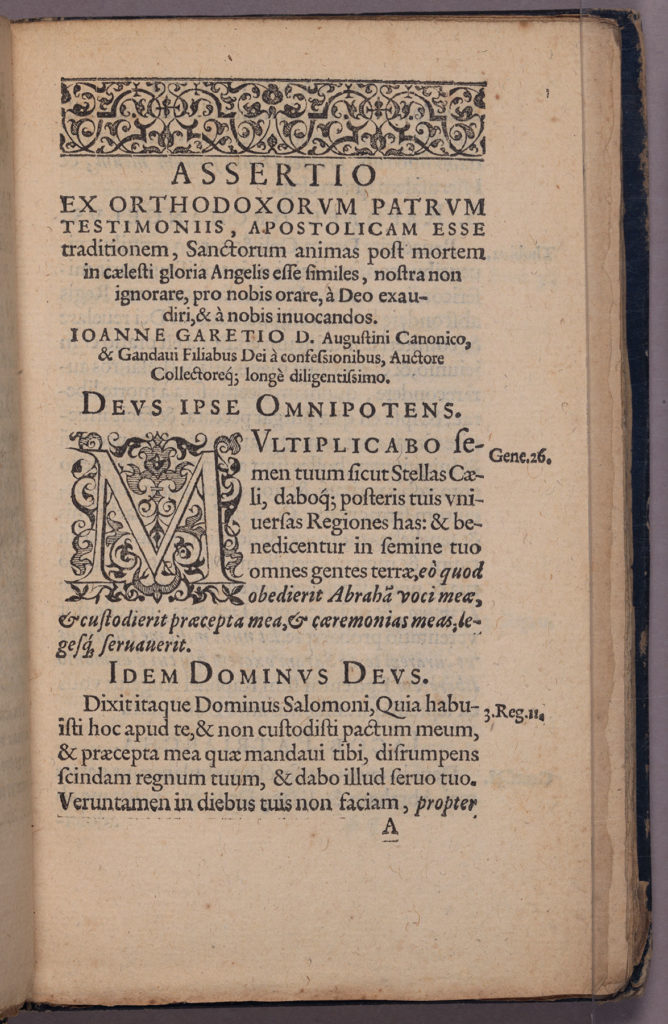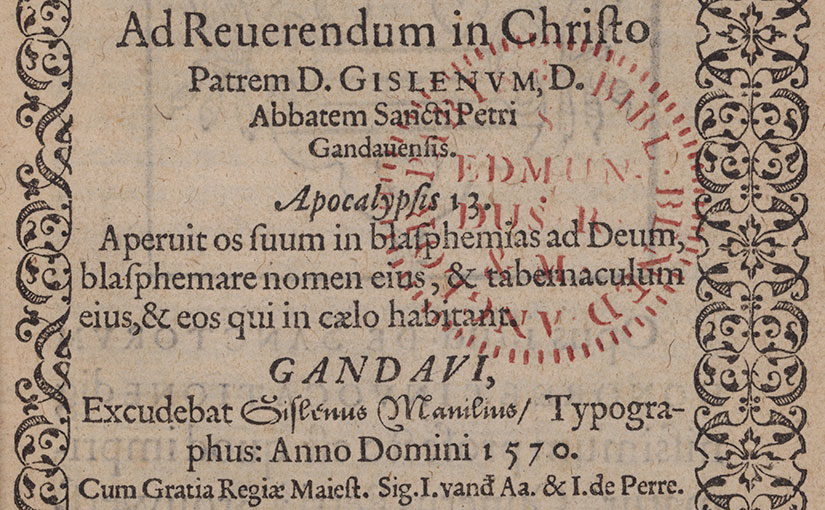by Alan Krieger, Theology and Philosophy Librarian
Hesburgh Libraries has just acquired a copy of an important and rare early modern title in Catholic theology with an interesting provenance. Jean Garet (d. 1571) wrote a number of works aimed mainly at exposing the doctrinal errors of Protestantism and illustrating the truth of Catholic teachings; his works were highly esteemed during his lifetime and he was read widely throughout the seventeenth century. This work, De sanctorum invocatione liber (S. Manilius, 1570), deals with the efficacy of the intercession of the saints.

This copy is of particular interest as it was owned by the English Benedictine Priory of St. Edmund King and Martyr in Paris during the seventeenth century and is recorded in their library catalogue of 1702. Benedictine monasticism in England effectively ended when Henry VIII dissolved the monasteries between 1536 and 1540; however, it lived on through the various colleges and religious houses which were established on the continent. St. Edmund’s priory was founded in 1615 when monks from the English Benedictine priory in Lorraine arrived in Paris to establish a house of studies; in 1619, the community joined the revived English Benedictine Congregation which was formally established that year.
After a number of moves, the community settled in the Rue Saint Jacques (1632) where the monks were to remain until the French Revolution. Their library grew in size and importance from that date, given that the monastery was a house of studies. The first complete catalogue of the library is that of Dom Benet Weldon (1674-1713); it was finished in 1702. The catalogue is important for bibliographical research today because the library of St. Edmund’s priory was dispersed during the French Revolution; this work is recorded in Weldon’s catalogue with shelfmark 7 E 7. The entry is written in Weldon’s hand, indicating that it was present in the library in 1702 and was not a later addition.
Only 117 books—out of a total of approximately 5,800—from the library at St. Edmund’s priory have been traced, and until now all of the identified copies are in institutional libraries in Europe or the United Kingdom. Thus, this is the first book from St. Edmund’s (and the first copy of the work itself) to be held by a North American institution.

